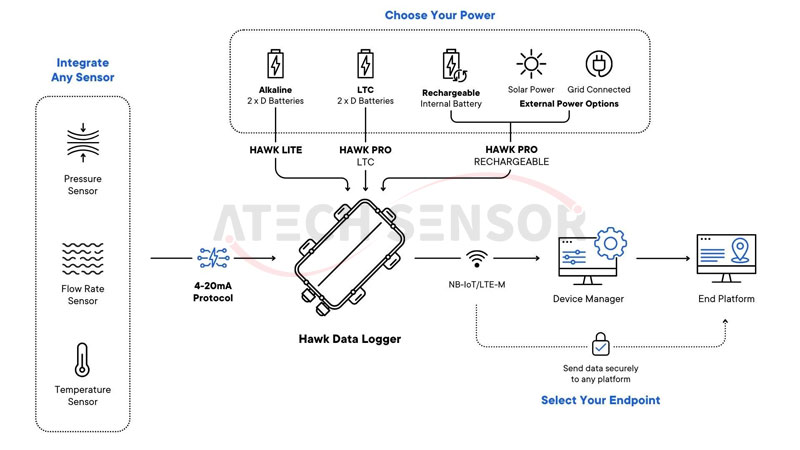Maintaining high water quality standards is essential for operational efficiency, environmental responsibility, and providing safe water to the public. Water quality monitoring systems are crucial for businesses to meet these standards. In this article, we explore the importance of these systems, their functionality, and how advanced technologies like data loggers can enhance water quality monitoring.
What is a Water Quality Monitoring System?
A water quality monitoring system aims to measure various parameters of water. These systems contain water quality sensors that logs different types of quality parameters such as pH, dissolved oxygen, water purity, conductivity, and temperature. The sensors collect this data and a data logger will read the data interpreted from the sensors. This data will then be sent to a cloud system allowing for remote monitoring of data captured.
How Do Water Quality Monitoring Systems Work?
Water quality monitoring comprises of a systematic process which involves sensor placement, data transmission, and near-real-time monitoring. Water quality sensors are strategically placed in several locations within a water body to capture critical data. Once this data is captured, the sensors will then wirelessly transmit to the data logger. The data logger will take this data, interpret it, and send it to a cloud network to enable remote access. This allows for near-real-time monitoring, allowing for critical informed decisions to be made promptly.
Importance of Water Quality Monitoring Systems
Water quality monitoring systems provide accurate and reliable data, essential for maintaining water standards and making informed decisions. These systems help organizations achieve significant cost savings, remain compliant, reduce waste, and optimize processes. Water quality monitoring is critical across various industries, including:
●Agriculture: Monitors irrigation water to prevent soil contamination and ensure crops receive clean water, essential for healthy growth and preventing the uptake of harmful substances by plants.
●Food and Beverage: Ensures that water used in production is safe, free from contaminants, and meets health regulations, maintaining the safety and quality of consumable products.
●Manufacturing: Ensures that water used in production processes is free from contaminants, preventing damage to machinery and ensuring the quality of the final product.
●Healthcare: Maintains high water quality standards for medical facilities, ensuring that water used for cleaning, sterilization, and patient care is free from harmful microorganisms and chemicals, preventing infections and ensuring patient safety.
●Environmental Management: Monitors natural water bodies to protect ecosystems by detecting pollution, changes in water chemistry, and other factors that could harm aquatic life. Provides data for environmental policies and conservation measures to protect natural water resources.
Water Quality Monitoring: Data Loggers and the Hawk
Data loggers play an integral role in recording and storing data from water quality sensors. Data loggers such as the Hawk ensure that the data is preserved accurately and is readily available for analysis and reporting.
Features of The Hawk
The Hawk data logger is designed for efficient water quality monitoring, with many advanced features designed for efficient water quality monitoring:
Low Power Consumption: Designed to operate efficiently with minimal power usage. The Hawk features different power housing types, including a solar power housing with LiPo (Lithium Polymer) batteries, which harnesses solar energy for extended and continuous operation.
Real-Time Data Logging: The data captured from The Hawk can be configured to upload as frequently as required, providing remote access for timely decision-making.
Durability: The Hawk’s durability is ensured by its IP68 and IK10 ratings, providing exceptional protection against dust, water submersion, and mechanical impacts. Additionally, its rugged construction with corrosion-resistant and UV-resistant materials ensures reliable performance in harsh environmental conditions.


